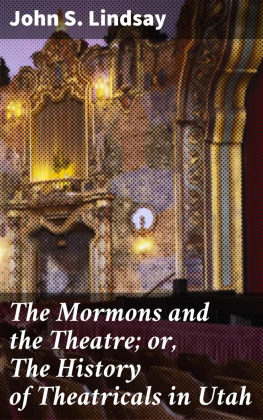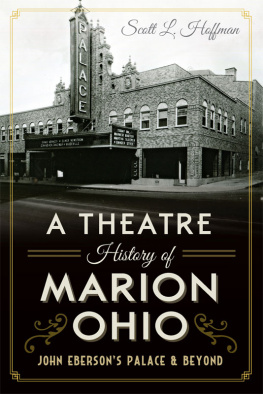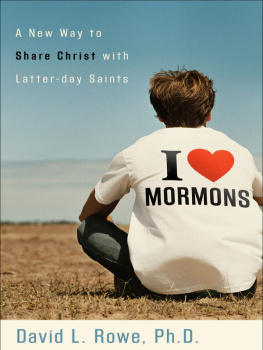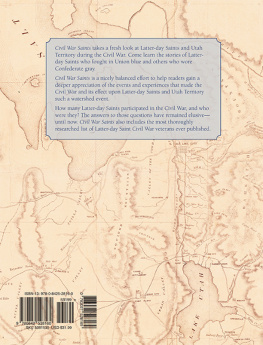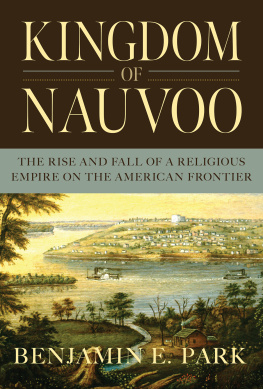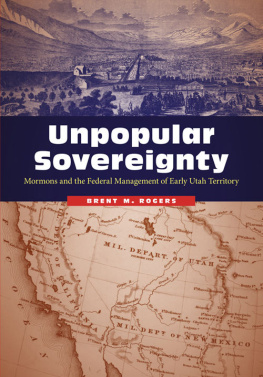CHAPTER I.
Table of Contents
In rather sharp contrast to other Christian denominations, the Mormonsbelieve in and are fond of dancing and the theatre. So much is thisthe case that Friday evening of each week during the amusement seasonis set apart by them in all the settlements throughout Mormondom fortheir dance night. Their dances are generally under the supervision ofthe presiding bishop and are invariably opened with prayer orinvocation, and closed or dismissed in the same manner, with a briefreturn of thanks to the Almighty for the good time they have enjoyed.
The theatre is so popular among the Mormon people, that in almostevery town and settlement throughout their domains there is an amateurdramatic company.
It is scarcely to be wondered at that Salt Lake has the enviabledistinction of being the best show town of its population in theUnited States, and when we say that, we may as well say in the wholeworld. It is a well established fact that Salt Lake spends more moneyper capita in the theatre than any city in our country.
Such a social condition among a strictly religious people is notlittle peculiar, and is due, largely, to the fact that Brigham Youngwas himself fond of the dance and also of the theatre. He could "shakea leg" with the best of them, and loved to lead the fair matrons andmaidens of his flock forth into its giddy, bewildering mazes. Certainround dances, the waltz and polka, were always barred at dancesBrigham Young attended, and only the old-fashioned quadrilles andcotillions and an occasional reel like Sir Roger de Coverly or theMoney Musk were tolerated by the great Mormon leader.
That Brigham Young was fond of the theatre also, and gave greatencouragement to it, his building of the Salt Lake Theatre was astriking proof. He recognized the natural desire for innocentamusement, and the old axiom "All work and no play makes Jack a dullboy," had its full weight of meaning to him. Keep the people in apleasurable mood, then they will not be apt to brood and ponder overthe weightier concerns of life.
There may have been a stroke of this policy in Brigham Young'samusement scheme; but whether so or not he must be credited with bothwisdom and liberality, for the policy certainly lightened the caresand made glad the hearts of the people.
Although Salt Lake City has been the chief nursery of these twinsources of amusement for the Mormon people, to find the cradle inwhich they were first nursed into life, we will have to go back to atime and place anterior to the settlement of Salt Lake. Back in thedays of Nauvoo, before Brigham Young was chief of the Mormon church,under the rule of its original prophet, Joseph Smith, the Mormonpeople were encouraged in the practice of dancing and going to witnessplays. Indeed, the Mormons have always been a fun-loving people; it isrecorded of their founder and prophet that he was so fond of fun thathe would often indulge in a foot race, or pulling sticks, or even awrestling match. He often amazed and sometimes shocked thesensibilities of the more staid and pious members of his flock by hisantics.
Before the Mormons ever dreamed of emigrating to Utah (or Mexico, asit was then), they had what they called a "Fun Hall," or theatre anddance hall combined, where they mingled occasionally in the merrydance or sat to witness a play. Then, as later in Salt Lake, theirprophet led them through the mazy evolutions of the terpsichoreannumbers and was the most conspicuous figure at all their socialgatherings.
While building temples and propagating their new revelation to theworld, the Mormons have always found time to sing and dance and playand have a pleasant social time, excepting, of course, in their daysof sore trial. Indeed, they are an anomaly among religious sects inthis respect, and that is what has made Salt Lake City proverbially a"great show town."
Mormonism during the Nauvoo days had numerous missionaries in thefield and many converts were added to the new faith. Among others thatwere attracted to the modern Mecca to look into the claims of the newevangel, was Thomas A. Lyne, known more familiarly among histheatrical associates as "Tom" Lyne.
Lyne, at this time, 1842, was an actor of wide and fair repute, in thevery flush of manhood, about thirty-five years of age. He had playedleading support to Edwin Forrest, the elder Booth, Charlotte Cushman,Ellen Tree (before she became Mrs. Charles Kean), besides havingstarred in all the popular classic roles. Lyne was the second actor inthe United States to essay the character of Bulwer's RichelieuEdwinForrest being the first.
The story of "Tom" Lyne's conversion to the Mormon faith created quitea sensation in theatrical circles of the time, and illustrates thegreat proselyting power the elders of the new religion possessed.
Lyne, when he encountered Mormonism, was a skeptic, having outgrownbelief in all of the creeds. It was in 1841 that George J. Adams, abrother-in-law of Lyne's, turned up suddenly in Philadelphia (Lyne'shome) where he met the popular actor and told him the story of hisconversion to the Mormon faith. Adams had been to Nauvoo, met theprophet and become one of his most enthusiastic disciples. Adams hadbeen an actor, also, of more than mediocre ability, and as a preacherproved to be one of the most brilliant and successful expounders ofthe new religion. Elder Adams had been sent as a missionary toPhiladelphia in the hope that his able exposition of the new evangelwould convert that staid city of brotherly love to the new andeverlasting covenant.
In pursuance of the New Testament injunction, the Mormon missionariesare sent out into their fields of labor without purse or scrip, soElder Adams, on arriving at his field of labor, lost no time inhunting up his brother-in-law, "Tom" Lyne, to whom he related withdramatic fervor and religious enthusiasm the story of his wonderfulconversion, his subsequent visit to Nauvoo, his meeting with the young"Mohammed of the West," for whom he had conceived the greatestadmiration, as well as a powerful testimony of the divinity of hismission.
Adams was so convincing and made such an impression on Lyne that he atonce became greatly interested in the Mormon prophet and his newrevelation. This proved to be a great help to Elder Adams, who wasentirely without "the sinews of war" with which to start his greatcampaign.
The brothers-in-law put their heads together in council as to how thecampaign fund was to be raised, and the result was that they decidedto rent a theatre, get a company together, and play "Richard III" fora week. Lyne was a native of Philadelphia and at this time one of itsmost popular actors. It was here that Adams had met him a few yearsbefore and had given him his sister in marriage.
The theatrical venture was carried through, Lyne playing Richard andElder Adams, Richmond. The week's business, after paying all expenses,left a handsome profit. Lyne generously donated his share to the newcause in which he had now grown so deeply interested and Elder Adamsprocured a suitable hall and began his missionary labors. His eloquentexposition of the new and strange religion won many to the faith; oneof the first fruits of his labors being the conversion of Thomas A.Lyne.
Such an impression had Adams's description of the Mormon prophet andthe City of the Saints (Nauvoo) made upon Lyne that he could not restsatisfied until he went and saw for himself. He packed up his wardrobeand took the road for Nauvoo. With a warm letter of introduction fromElder Adams to the prophet, it was not long before Lyne was thoroughlyingratiated in the good graces of the Mormon people. He met theprophet Joseph, was enchanted with him, and readily gave his adherenceto the new and strange doctrines which the prophet advanced, butwhether with an eye single to his eternal salvation or with both eyesopen to a lucrative engagement "this deponent saith not."


